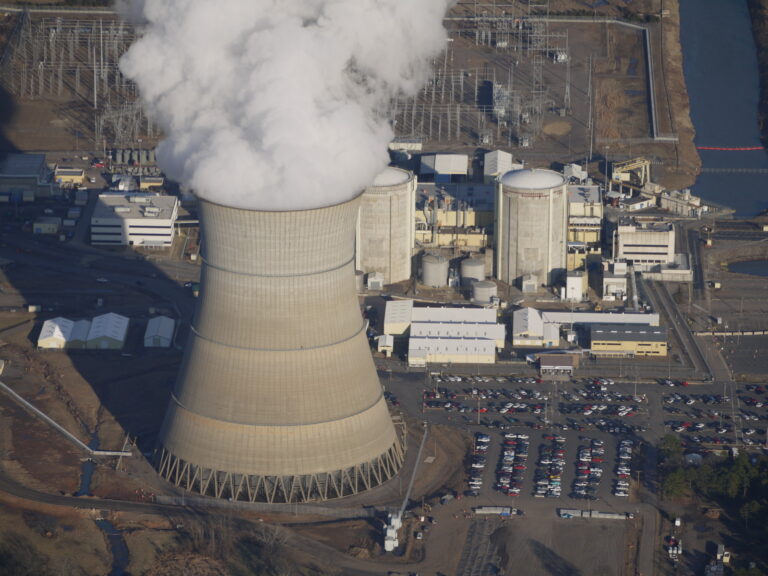
The Electric Power Research Institute (EPRI) is an independent, non-profit organization focused on advancing safe, reliable, affordable, and clean energy for society through global collaboration, science and technology innovation, and applied research. EPRI also conducts nuclear-focused research in the areas of materials management, fuels and chemistry, plant performance, and strategic initiatives. ESAL spoke with Maria Guimaraes, Energy System Resources technical executive, and Mary Presley, technical executive on EPRI’s nuclear engineering team, to learn more about the research and outreach efforts led by EPRI’s nuclear sector and how nuclear energy remains relevant in the current energy market.
NOTE: At the time of this interview, Guimaraes was working as program manager, nuclear plant support.
MS: What kind of research does EPRI contribute to?
Presley: Several research areas work together to cover a broad energy spectrum. Some topical areas we focus on are electricity, transmission and distribution, and electricity generation, which includes solar, wind, coal, natural gas, and nuclear. As an institute, we really take that breadth and focus it on helping the energy industry transition to a decarbonized future. Maria and I work in the nuclear sector. We do work in materials management making sure that we know how to inspect any material you find in a nuclear power plant. One area centers around plant performance and that's kind of the operational part of the nuclear plant.

MS: Where do you see the future of this research?
Presley: We have a set of strategic initiatives that the nuclear industry could start working on in order to have solutions such as next-generation plants, modernizing existing plants, and supporting long-term operations.
MS: Maria, please tell us about your work in EPRI.
Guimaraes: I work in the nuclear sector just like Mary, but I work in the area of inspection. We call it plant support. I'm a civil engineer by training. I started looking at how industry inspects and maintains civil infrastructure in nuclear facilities such as the containments and the cooling towers.
MS: Mary, what work do you do?
Presley: My background is in nuclear engineering. I have been at EPRI for 10 years, but I have about 15 years of experience in the industry. I work in the risk and safety group and our group provides methods and tools to help the industry assess and continually improve safety in a cost-effective manner.
MS: How do nuclear power plants work?
Presley: Most large electricity production works the same way. It's the same principle that if you move a magnet in a circle, it'll generate electricity. So different energy sources move the magnet and spin the magnet in different ways. We use the nuclear reaction to heat up water, which uses steam to turn the turbine and generate electricity. So you can think of a nuclear power plant like a high-tech tea kettle. The thing that boils the water is the nuclear reaction.
MS: What is a nuclear reaction?
Presley: The way the nuclear reaction works is you have a neutron and it hits an atom, usually uranium, and then the atom splits apart and releases a lot of energy that heats the water around it. That reaction is called fission. When the atom splits, in addition to releasing a bunch of energy, it releases a couple more neutrons that go and hit other uranium atoms that then split and release even more energy. Most reactors work that way.
MS: How do you define clean energy? Why is nuclear energy “clean?”

Guimaraes: Every form of energy you produce will have some constraints. Nuclear doesn't have any CO2 emissions and is able to produce power 24/7. We call that clean firm capacity. That is a source of power that doesn't emit carbon dioxide.
MS: Tell us about some of EPRI’s outreach efforts.
Guimaraes: We teach high school students about the energy mix and how to choose an energy portfolio. We have several countries or regions based on actual countries or regions in the U.S. We tell students these are your constraints: cultural, economical, and geopolitical. The need for a very mixed portfolio also takes into account several issues, including regional needs and affordability.
MS: Why are more people changing their view of nuclear energy from negative to positive?
Guimaraes: Different societies and their views on energy, not just nuclear, shift through time. It could be because of economic constraints or it could be because of climate change and how the need for clean firm capacity makes you reevaluate what you thought a while ago. In the last couple years, the focus on decarbonizing the economy perhaps has made people reconsider and reevaluate the role of nuclear power.
Presley: What people see as negatives are magnified. The positive parts of nuclear power aren't always discussed in the same way. When it's dealt with in an appropriate manner, it's a managed risk. Nuclear power is a really powerful option towards meeting clean energy targets.
MS: Please tell us more about how attitudes towards nuclear energy have shifted in the U.S. since Three-Mile island.
Presley: That was sort of a wake-up call for industry in 1979. That technology was still fairly new at that scale. The industry has learned a lot from that incident and has fundamentally changed how they operate nuclear power plants and how they think about nuclear energy. One of the things that the industry did is create INPO (Institute of Nuclear Power Operations) and WANO (World Association of Nuclear Operations). Part of their mission is to maintain a nuclear safety culture. Nuclear safety culture has some underlying principles that everybody from the janitor to the CEO is personally responsible for nuclear safety. If anything is amiss, they have personal responsibility and empowerment through corrective action systems to say something. Leadership needs to demonstrate the commitment to safety and that trust needs to permeate the organization.
MS: In whose hands is the future of nuclear energy?
Guimaraes: At EPRI, we work with energy companies all over the world, and different countries have a different way of financing nuclear energy. The U.S. is probably the country that has the most private ownership of nuclear facilities . For many of our other members, the government owns the companies that have the nuclear facilities. So far there has been a lot of private investments in nuclear energy. There is a lot of funding the U.S. government put into research development, demonstrations, proof of testing and so on that incentivize the industry.
MS: Why is it becoming increasingly relevant for states to establish a stance on nuclear energy?
Presley: We don't speculate on government policy, so I can't speak specifically on that, but in terms of why it's important for governments to take a stance, just imagine that you're a policymaker and you have this goal for your locality that you need to go carbon-free. They have a goal that they have to meet. So they're looking at their toolbox to see which tools they can put together that will meet that goal. Nuclear is one of those tools.
Guimaraes: EPRI doesn't advocate for one type of energy. In fact, we believe that a good, healthy energy mix is the best solution for an affordable, reliable, equitable clean energy future. That healthy energy mix will depend on where you are in the U.S. or in the world.